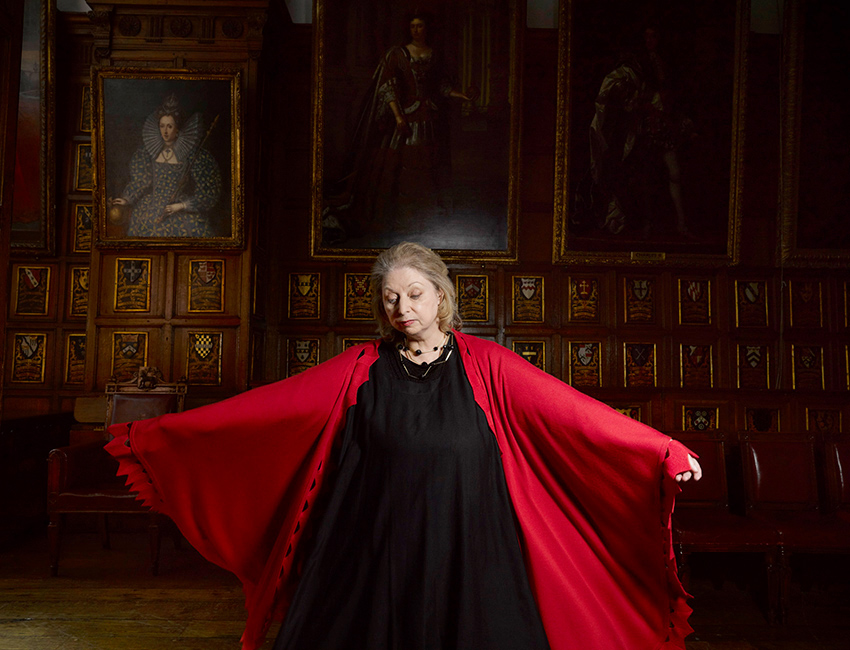
Reframing Narratives Women in Portraiture – National Portrait Gallery, London
Photographer Richard Ansett took this portrait of Mantel commissioned by the BBC for her Reith Lectures in 2017. The following excerpt is from his reflections on his time with her.
I felt a rare affinity with Hilary Mantel in the brief time we had together. I was privileged to be present during this synchronicity of subject and place when I met her for the first time in the historical setting of Middle Temple Hall, one of the four inns of court within the City of London, whose construction was completed in the early 1570’s. Photography is inspired as well as in competition with art history, so in these moments I was overwhelmed by the responsibility to represent something of Mantel’s personality inextricably linked to British history that she was so able at bringing to life in her writing. Being in her presence I reflected on the invisible timelines linking present and past, passing through her into the portraits on the walls that felt like reminders of the intimidating legacy of portraiture that I was now expected to emulate.
There are some processes that are consistent to my practice and whilst the subject is inevitably complicit they cannot be entirely collaborating. In all my work, the portrait must feel exploratory, an examination of the subject’s complex humanity caught covertly ‘in their presence’ which might seem like a strange thing to say but permission has been given tacitly or otherwise, to be exposed. With the famous it can betray something of their true nature very often hidden behind the mask of their celebrity persona. My style is defined by this avoidance of any sense of this collaboration, which I feel devalues the portrait – I am always working towards a moment of emotional ambivalence. I pre-light and compose the scene in Mantel’s absence so that not a moment of her presence infront of the camera is wasted, the early moments especially before the subject can fully adjust to the new environment are vital in capturing something spontaneous and vulnerable. Mantel was well-known for her immense talent which was in contrast to a fragility and this lack of a stereotypical physicality belied the incredible charisma that is built on her humility.
I do not need to like my subjects, it is irrelevant but for the record I adored her immediately. A subject must inspire or rather I must find something in them to inspire me to access the energy required to find something of value in our time together and in this image I am empathising with her process as a writer in unravelling the humanity of the distant giants of history represented by the paintings and building that surrounded her.
Mantel explained to me that so often people had felt concerned for her health to the extent that her portraits were mostly sedentary and my lack of consideration for her comfort in the pursuit of a better portrait allowed for this expression of a rarely seen but undeniable joyful, playful side. I feel like she is dancing between worlds belonging neither.
This picture is all the more precious to me because of Mantel’s appreciation of it and before she died she acquired it for her personal archive at the Huntington Library, California, which she reassured me during a conversation about legacy, was earthquake proof and would stand a small chance of surviving history to be seen by a future audience in the same way perhaps that we wonder at the paintings of subjects from the past now.
Dame Hilary Mantel, Middle Temple, 2017 © Richard Ansett National Portrait Gallery Permanent Collection acquired 2022.